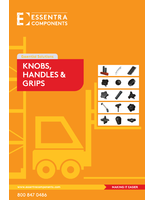The Benefits of Injection Mold Filling Simulation
Mold filling simulation is a very helpful tool for the injection molder and plastic part designer. The process uses software to virtually simulate the filling, packing and cooling of a molded plastic part. It allows the mold/part designer to make critical decisions about the design before the injection mold is manufactured, when design changes are significantly less expensive.
When considering part and mold design, gate location and part filling are initial concerns. The simulation will provide a visual representation of how the mold will fill. This information is valuable in showing potential problems, such as areas of the part that will not completely fill with plastic. It will also show where weld lines develop, areas on the part where two different flow fronts meet and plastic "welds" together. The software can help to determine if these welds will be structurally sound or not. With this type of initial information, the designer can then simulate different gate locations that can improve these and other situations.
Determinations can also be made concerning a specific resin. The software can calculate the pressure inside the filling plastic, which could point towards potential problems. Other evaluations such as material sheering, temperature and pressure can also be determined. This and other data is not only helpful for designing the part, but can also be used to decide if a specific material will work with a given part design.
In more advanced simulations, the affects of cooling lines in a potential mold design can be analyzed. The heating and cooling of the mold can be simulated through the entire molding cycle, over multiple cycles, and can help in determining the size and location of cooling lines. Since cooling lines affect how or if the part warps, this also allows for the potential warpage of the part to be viewed, analyzed, and adjusted for. Areas of the mold where the temperature is not as controllable will be visible through the simulation as well.
Mold filling simulation is also very useful in molds that produce multiple parts. The analysis will show whether or not the parts fill at the same time, and adjustments to the parts, runners and gates can be made in the simulation. Air that is trapped during part filling can be discovered so that proper venting can be used in the tool. Areas of the part that will have sink marks can be identified and addressed as well.
These capabilities are also useful on existing molds. An analysis can point to fixes for molds that have issues such as uneven fill times between parts, trouble filling, and heating or cooling issues. Although a completed mold is more expensive to change than one that is still in the design stage, mold filling simulation may point to a solution that would otherwise require trial and error on the bench. This is an advantage when working with Crescent Industries' engineers who utilize 3D mold flow simulation software.
For more information on Crescent Industries design and development services, Toll Free: 1-800-411-3844, E-Mail: sales@crescentind.com or visit our website www.crescentind.com/crescent_industries_design_development.html.




